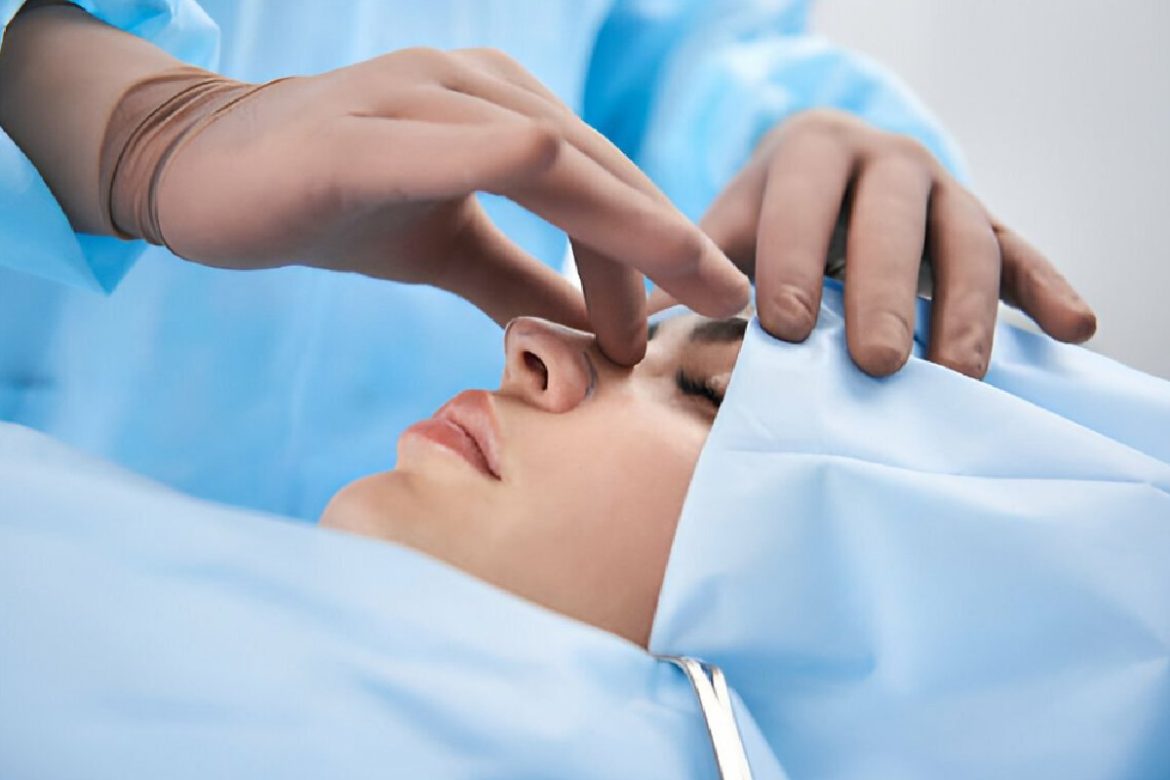Rhinoplasty Surgery: Many athletes opt for rhinoplasty to improve nasal breathing, which is essential for optimal athletic performance, especially in endurance sports where efficient oxygen intake is crucial.
Correcting nasal deformities and breathing issues can significantly enhance an athlete’s endurance and performance. Additionally, injuries are common in sports, and rhinoplasty can be crucial for correcting deformities resulting from sports-related accidents, helping athletes recover function and regain confidence.
Table of Contents
General Recovery Phases
Recovery from nose job Turkey can be segmented into three main phases: the initial phase, which lasts about two weeks, involves significant healing and a noticeable reduction in swelling. The mid-recovery phase extends up to four weeks when most external signs of surgery disappear, and you can gradually resume more activities. Beyond four weeks, in the late recovery phase, the subtle refinements in nasal shape continue to settle, and normal activities can generally be resumed.
Factors Affecting Recovery Time
The speed of your recovery post-rhinoplasty can vary significantly based on individual health factors, the complexity of the surgery, and how closely post-operative instructions are followed. Your overall physical health and the body’s natural healing capabilities play crucial roles. Ensuring you follow all your surgeon’s guidelines can also significantly impact how quickly and effectively you recover.
Physical Activity and Rhinoplasty Recovery
Limitations on Physical Activity
High-exertion activities are significantly restricted immediately following surgery to prevent nosebleeds and manage swelling effectively. This precaution helps maintain the integrity of the surgical corrections during the crucial early stages of healing. Adhering to these restrictions is important to ensure a smooth and complication-free recovery.
Reasons for Activity Limitations
Engaging in strenuous activities can lead to increased blood pressure, heightening the risk of bleeding and swelling and potentially delaying the healing process. The elevated pressure can disrupt the new structural changes to your nose, causing setbacks. Therefore, keeping physical activity to a minimum is crucial during the initial recovery phase.
Returning to Sports: General Guidelines
Early Post-Operative Period (First 2 Weeks)
Avoid all forms of physical exertion during the first two weeks after surgery. This period is critical for the initial healing process, where even minor stress on your body can affect the surgical results. Complete rest is advised to ensure the affected tissues heal without any disturbance.
Mid Recovery Phase (2-4 Weeks)
As you enter the mid-recovery phase, light activities such as walking are encouraged to promote circulation and overall recovery. However, avoiding any activities that could potentially impact the face or cause strain is crucial. This careful approach helps in steady healing without risking injury to the nose.
Late Recovery Phase (4-6 Weeks and Beyond)
In the late recovery phase, you can gradually reintroduce more strenuous activities per your doctor’s advice and based on how well your nose is healing. This phase allows more flexibility in physical activity, but caution is still advised to protect the delicate surgical results.
Specific Sports Considerations
Non-contact Sports
Activities like jogging and swimming are generally safe to resume a few weeks after surgery, provided they do not pose a risk of contact with the nose. These sports can help maintain fitness levels without compromising the recovery process.
Contact Sports
Engaging in contact sports such as basketball or soccer should be postponed until your surgeon confirms complete healing, which typically takes at least six weeks. Premature participation in these sports can lead to accidental impacts that jeopardize the surgical outcome.
High-impact Sports
Sports that involve significant physical contact or impact, such as boxing or martial arts, require an extended break. These activities should only be resumed once you have full clearance from your healthcare provider to prevent any direct trauma to your newly reconstructed nose.
Protective Measures When Returning to Sports
When you decide to return to sports activities, wearing protective gear like a sports mask or a nose guard is essential to safeguard your nose. This gear helps to absorb any accidental impacts and distribute the force away from your nasal area.
Custom Recommendations for Different Sports
It’s beneficial to consult with your surgeon about the best type and fit of protective gear tailored to the sport you play and the details of your surgery. Such personalized advice ensures you receive the best protection as you ease back into your athletic routine.
Listening to Your Body
- Signs to Slow Down: Excessive pain, increased swelling, or bleeding are indicators that you need to reduce your activity level.
- Understanding Pain and Discomfort:Some discomfort is normal, but your surgeon should immediately evaluate any sharp or persistent pain.
- Coping Strategies for Athletes:Staying connected with teammates, mental coaching, and visualization techniques can be highly beneficial during this period.
In closing, always remember that every individual’s recovery is unique. Stay in tune with your body, and don’t rush the process. Your health and safety are paramount; you’ll be back doing what you love most with time.
Remember, patience and following professional advice are key to a safe and successful recovery. For more detailed information and personalized advice or to explore our range of supportive services, we encourage you to visit the Luna Clinic’s website.


